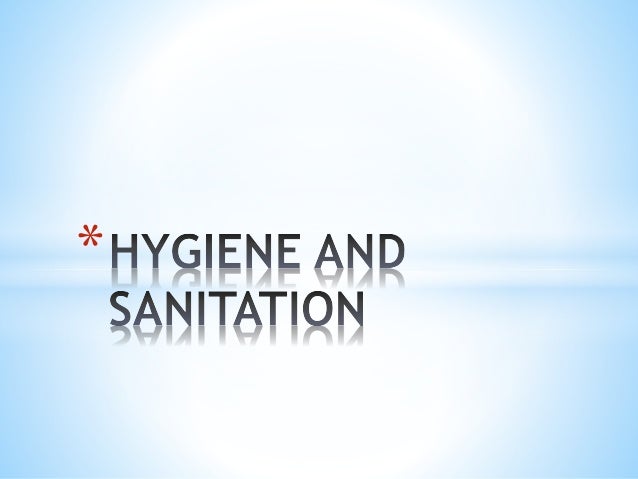
The
preparation and distribution of food in a clean environment by healthy food
workers.
Basic Personal Hygiene
ØShower or bath daily.
Ø
Clean uniforms’ including
shoes’neckerchief’aprons’side
towels and toques.
Ø
Side towels should be used only for
hot items. Wiping spills that are stored in a sanitizing solution in a
red bucket.
Ø Clean and well trimmed finger nails.
Hygiene Appearance and C I A Rules
ØMen must be clean shaven.
ØMustache is to be neatly trimmed and
not hanging over upper lip.
ØHair should be restrained with a hat
and hairnet if it touches or is below the collar.
Ø Jewelry should not be worn in a
kitchen because of safety and health concerns.
ØJacket pockets should hold only pen and
thermometer.
Hand Washing and the Glove Law
Except
when washing fruits and vegetables food employees may not contact exposed
ready-to-eat food with their bare hands and shall use suitable utensils such as
tissue’spatulas’tongue or single use gloves.
When to Wash Your Hands
ØBefore you begin work.
ØAfter handling soiled equipment or
utensils.
ØAfter touching bare human body parts
other than clean hands and arms.
ØAfter coughing’sneezing’using a
disposable tissue’ using tobbaco’eating or drinking.
ØWhen switching between working with raw
food and working with ready to eat food.
ØAfter using the lavatory.
Safe Food for Good Health
ØKeep it hot or keep it cold.
ØAlways keep it covered.
ØIf is doubt throw it out.
Keys to Safer Food
Keep Clean
Wash your hands before
handling food and often during food preparation.
Wash your hands after going to the toilet.
Wash and sanitize all surfaces and equipment used for
food preparation.
Protect kitchen area and food from insects’ pests and
other animals.
Separate Raw and Cooked Food
Separate raw meat’
poultry and seafood from other food.
Use separate equipments and utensils such as knives and
cutting boards for handle raw food.
Store food in containers to avoid contact between raw
and prepared food.
Cook Thoroughly
Cook food thoroughly;
especially meat;
poultry; eggs and seafood.
Bring food like soups and stew to boiling
to make sure that they have reached 70 c
for meat and poultry; make sure that juices
are clear; not pink
(ideally use a thermometer).
Reheat cooked food thoroughly
Keep Food at Safe Temperature
Do not leave cooked food
at room temperature for more than 2 hours.
Refrigerate promptly all cooked and perishable food
(preferably below 5 c)
Keep cooked food piping hot
(more than 60 c)
prior to serving.
Do not store foods too long even the refrigerator?
Do not thaw frozen food at room temperature.
Use Safe Water:-
Use safe water or treat
it to make it safe.
Select fresh and wholesome food.
Choose food processed for safety; such as
pasteurized milk.
Wash fruits and vegetables especially
if eaten raw.
Do not use food beyond its expiry date.
Knowledge = Prevention.
Bacterial Growth Curve
ØLag phase (Period of adjustment)
ØAccelerated growth phase (Period of
prolific growth. Rate of division is greatest)
ØStationary phase(competition for space
and nutrients)
ØDecline phase or Death phase (Due to a
missing environmental requirements for survival the bacteria die off as quickly
as they grew.
WHAT IS BACTERIA?
They are
organisms, Microscopic in nature, they are unicellular and re-produced
asexually.
HISTORY
The term bacteria was devised in the
19th century by the German botanist Ferdinand Cohn who based it on the Greek bakterion meaning a small rod or staff. In 1853,
Cohn categorized bacteria as one of three types of microorganisms -- bacteria
(short rods), bacilli (longer rods), and spirilla (spiral forms). The term bacteria was preceded in the 17th
century by the microscopic animalcules described by
Antony van Leeuwenhoek .
KINDS
OF BACTERIA
1- HARMLESS BACTERIA:
Most bacteria fall into this category. They are neither
harmful nor helpful to us.
2. BENIFICIAL BACTERIA
These bacteria are helpful to us. For example, many live in
our intestinal tract, where they fight harmful bacteria, aid the digestion of
food and produce certain nutrients. In food production, bacteria make possible
the manufacture of many foods including Cheese, Yoghurt sauerkraut.
3-UNDESIRABLE
BACTERIA:
They are responsible for food spoilage. They
cause souring,
putrifing, and decomposition. These bacteria may
or may not cause disease, but they have a built-in safety factor. They announce
their presence by means of sour odors, sticky or slimy surfaces, and
discoloration.
As long as we use common sense and follow the rule” WHEN IN DOUBT” through it out. We are
relatively safe from these bacteria.
—4. DIESASE-CAUSING
BACTERIA:
These are the bacteria that cause most food
borne illness, the bacteria that we are most concerned with. Pathogens do not leave
detectable odors or tastes in food. In other words you can’t tell if food is
contaminated by smelling, tasting, or looking at it. The only way to protect
food against pathogenic bacteria is by proper hygiene and sanitary food
handling and storage techniques.
WHAT IS TDZ OR FDZ?
TDZ: Temperature Danger
Zone.
Or
FDZ: Food Danger Zone
Temperature Ranges
for TDZ or FDZ:
—Between 6 C
to 60 C
—Between 41 FH to 140
FH.
WHAT
IS
No comments:
Post a Comment